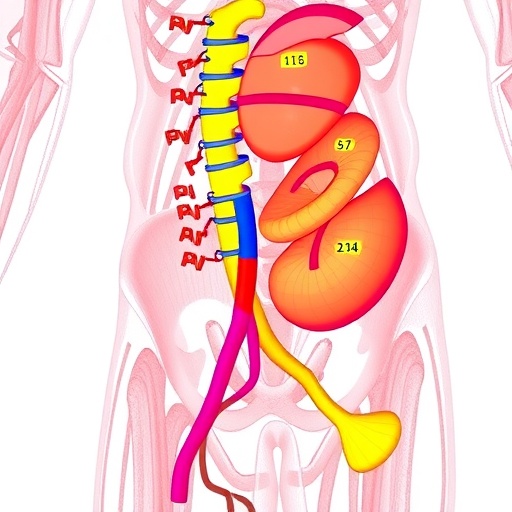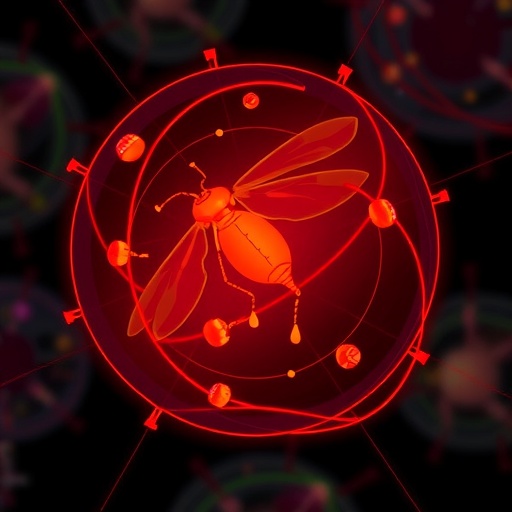Recent advancements in the field of urology have propelled the development of innovative benchtop and in silico models that significantly improve our understanding of penile tissue dynamics. A recent study led by Khorshidi et al. explores a pioneering approach employing these models, validated through rigorous testing with human penile tissue inflation. This allows for a new depth of insight into the biomechanical properties of erectile tissue, representing a leap forward in both basic science and clinical applications.
The study discusses the importance of accurately simulating the mechanical properties of human tissues, particularly in the context of urological treatments and surgical interventions. With an increasing prevalence of erectile dysfunction and related disorders, understanding the underlying mechanics of penile tissue becomes paramount. Traditional methods have often relied heavily on animal studies or less comprehensive in vitro models, but this new research seeks to bridge those gaps by utilizing human tissue samples in a controlled laboratory setting.
In the course of their investigation, the researchers utilized a combination of benchtop experiments and advanced computational simulations to create a comprehensive understanding of how human penile tissue responds to physiological loading. The authors express a strong rationale for integrating these approaches, noting that the predictive capabilities of in silico modeling can be enhanced through empirical validation with actual human tissues. This integration not only promotes accuracy but also significantly reduces the ethical burden of animal testing.
Key to their methodology was the inflation testing of human penile tissues, a process that entails carefully applying pressure to better understand how tissues behave under stress. The results yielded critical insights into the elastic properties of the tissue, which vary across different anatomical regions and contexts. By providing a detailed mechanical profile of the erectile tissue, this study lays the groundwork for future research into tailored treatment options for individuals suffering from erectile dysfunction or complications arising from various urological conditions.
The investigators employed sophisticated imaging techniques to accompany their mechanical testing, including high-resolution ultrasound and MRI. These imaging modalities complement the biomechanical data by providing a non-invasive means of visualizing tissue behavior in real-time during inflation tests. This not only enhances the robustness of the findings but also opens pathways for longitudinal studies involving patient-specific data, which can have direct implications for personalized medicine.
Moreover, the authors highlight how these findings align with the principles of regenerative medicine and tissue engineering. Advances in these fields have shown promise for developing new therapies aimed at restoring erectile function and improving quality of life for patients. The validation of these mechanical models may serve as a stepping stone towards regenerative approaches that could eventually lead to breakthroughs in treatment strategies involving cellular therapies or bioengineered tissues.
As the research community continues to grapple with the challenges presented by urological disorders, this work represents a significant contribution to the interdisciplinary approach required for tackling these complex issues. By combining fundamental biomechanical research with clinical implications, Khorshidi et al. provide a comprehensive framework for understanding erectile mechanics in a way that could shape future interventions.
In terms of practical applications, the study’s insights could influence the design and development of medical devices engineered for erectile dysfunction treatment, offering engineers and clinicians valuable information that can inform product innovations. Additionally, the computational models developed in this research could be adapted for use in ongoing clinical trials, helping practitioners predict and evaluate outcomes with greater accuracy.
Collaborations across various disciplines, including urology, bioengineering, and computer science, will likely be necessary to further develop the ideas put forth in this research. It sets the stage for a new era in which interdisciplinary insights can lead to actual innovations in patient care. As the community continues to push the boundaries of understanding, studies such as these highlight the importance of interdisciplinary collaboration in the development of novel therapeutic options.
In conclusion, Khorshidi et al.’s work is poised to make significant strides in the understanding of erectile tissue mechanics. This research not only contributes to the fundamental knowledge in the field of urology but also serves as a beacon of advancement towards developing novel treatments for erectile dysfunction. The study exemplifies how rigorous scientific inquiry can bear fruit in terms of practical applications while underscoring the need for ethical considerations and human-centered research.
This pioneering approach is expected to rouse interest among researchers and clinicians alike, enabling them to approach erectile dysfunction with new perspectives and tools. The importance of patient-centered research cannot be overstated, as it lays the groundwork for future advancements in urology that benefit real individuals facing these challenging conditions.
By continuing to validate and refine these models, the potential for achieving personalized treatment strategies becomes more attainable. Оne can only anticipate the exciting breakthroughs that will arise from this combined effort of bench and clinical research in the urological domain.
Subject of Research: Urological benchtop and in silico models validated by human penile tissue inflation tests.
Article Title: Urological benchtop and in silico models validated by human penile tissue inflation tests.
Article References:
Khorshidi, M.A., Bose, S., Watschke, B. et al. Urological benchtop and in silico models validated by human penile tissue inflation tests. Ann Biomed Eng (2025). https://doi.org/10.1007/s10439-025-03852-6
Image Credits: AI Generated
DOI: 10.1007/s10439-025-03852-6
Keywords: erectile tissue mechanics, urology, benchtop models, in silico modeling, human tissue, biomedical engineering.
Tags: advancements in erectile dysfunction researchbenchtop experiments in urologybridging gaps in urology researchclinical applications in urologycomprehensive understanding of penile mechanicserectile tissue biomechanicshuman penile tissue dynamicsin silico modeling in urologyinnovative urological treatment methodsmechanical properties of human tissuespenile tissue inflation testingurological models





